
 English
English
 French
French
The survey of chemical agents with related health indicators and respiratory disorder in Do Son Industrial Zone of Hai Phong city
L’enquête sur les produits chimiques liés aux indicateurs de santé et de problème respiratoire dans la zone industrielle de Do Son de la ville de Hai Phong
C. Hoang Quoc1, B. Hoang Xuan1, S. Dang Xuan1, N. Nguyen Thi Minh2, T. Pham Van2
1: Tran Phu Specialized High School. Hai Phong city. Viet Nam
2: Hai Phong University of Medicine and Pharmacy. Hai Phong city. Viet Nam
Corresponding author
Academic - Professor Dr. PHAM VAN THUC
Dean of Hai Phong University of Medicine and Pharmacy. Viet Nam
Email: pvthuc@yahoo.com
DOI: 10.12699/jfvpulm.9.26.2018.24
ABSTRACT
Objectives. The study was conducted in the residential area of Do Son Industrial Zone in Hai Phong with the objectives: (1) Identification of some chemical agents in the environment around the Do Son industrial zone; (2) Identification of some relevant health indicators including respiratory and other internal diseasesof neighboring populations; (3) Proposed interventions.
Methods. It was descriptive and cross sectional study to describe the pollution situation of heavy metals in water sources, drinking water and food samples. This study analyzed the relationship between heavy metal pollution in the environment and some related health indicators in neighboring communities. It also evaluated the efficiency of some water treatment technologies at the laboratory scale.
Results. There was arsenic contamination in groundwater: an average arsenic content of 234.07± 140.74 µg/L; 58.7% of households have high levels of arsenic exposure. Related health indicators: No mercury, lead, cadmium, cyanide and chromium were detected in the communities surrounding Do Son. Detection of elevated 24h arsenic, an average concentration of 122.8 ± 70.97 g / L. Of these, 11.6% of arsenic was excreted inorganic and 72.1% was excreted as highly methylated (DMA). There was a significant correlation between arsenic level and exposure, between arsenic and DMA and IA, between clinical symptoms and arsenic levels.Activated charcoal filter from Ricinus communis L plants has the filtration properties of less than 10μg/L of arsenic.
Conclusion. The detection of arsenic content in underground water in Do Son industrial area exceeds permitted standard, relating some respiratory symptoms and other health problems. It is possible to use the technology of slow filtration tank with activated charcoal from Ricinus communis L plants to filter arsenic from underground water source for community.
KEYWORDS: Heavy metal; pollution; water sources; arsenic; health indicators.
RÉSUMÉ
Objectifs. L'étude a étémenéedans la zone résidentielle du parcindustriel Do Son à HaiPhong avec les objectifssuivants: (1) Identification de certains agents chimiquesdansl'environnementautour de la zone industrielle de Do Son; (2) Identification de certainsindicateurs de santé pertinents, y compris les maladies respiratoires et autres maladies internes des populations voisines; (3) Interventions proposées.
Méthodes. Ils'agissaitd'uneétude descriptive et transversalevisant à décrire la situation de pollution des métauxlourdsdans les sources d'eau, l'eau potable et les échantillonsd'aliments. Cetteétude a analysé la relation entre la pollution par les métauxlourdsdansl'environnementetcertainsindicateurs de santé connexesdans les communautésvoisines. Il a égalementévaluél'efficacité de certaines technologies de traitement de l'eau à l'échelle du laboratoire.
Résultats. Il y avait une contamination par l'arsenicdans les eauxsouterraines: uneteneurmoyenne en arsenic de 234,07 ± 140,74 μg / L; 58,7% des ménages ont des niveauxélevésd'exposition à l'arsenic. Indicateurs de santé connexes: Aucunmercure, plomb, cadmium, cyanureet chrome n'ontétédétectésdans les communautésentourant Do Son. Détection de l'arsenic à 24h élevé, une concentration moyenne de 122,8 ± 70,97 g / L. Parmiceux-ci, 11,6% de l'arsenic a été excrétéinorganique et 72,1% a étéexcrété sous formehautementméthylée (DMA). Il y avaitunecorrélationsignificative entre le niveaud'arsenic et l'exposition, entre l'arsenic et le DMA et l'IA, entre les symptômescliniques et les niveauxd'arsenic. Le filtre à charbonactif de Ricinuscommunis L a les propriétés de filtration inférieures à 10 μg / L d'arsenic.
Conclusion. La détection de la teneur en arsenic dans les eauxsouterraines de la zone industrielle de Do Son dépasse la normeautorisée, en ce qui concernecertainssymptômesrespiratoires et d'autresproblèmes de santé. Il est possible d'utiliser la technologie de la cuve de filtration lente avec du charbonactif des plantesRicinuscommunis L pour filtrerl'arsenic de la source d'eausouterraine pour la communauté.
MOTS CLÉS: Métauxlourds; pollution; sources d’eaux; arsenic; indicateurs de santé.
INTRODUCTION
Heavy metal pollution is a great concern to researchers and countries worldwide. Some heavy metals play an important role in creating products that serve the daily lives of people such as iron, copper, lead, zinc, mercury, etc. Heavy metals are common elements in nature. The concentrations of heavy metals in the wild existed at levels of several parts per million (ppm) to several hundredths of a million [1]. Human may be exposed to heavy metals in the environment through a number of main pathways such as heavy metals absorption through land use, heavily contaminated water, inhaled heavy metals in the air through dust particles and use food contaminated with heavy metals from soil and water. Exposure to heavy metals over a long period of time can lead to some symptoms such as chest pain, chronic cough, fatigue, irritation, anorexia, anorexia, memory loss, insomnia [2,3]. The main threat to the human body is exposure to some highly toxic heavy metals such as mercury (Hg), arsenic (Asen), cadmium (Cd) and lead (Pb).
Cigarette smoking is a major source of exposure to cadmium. Biological surveillance in populations has shown that smoking can significantly increase levels of cadmium in the blood (B-Cd). Concentration of B-Cd in smokers is 4-5 times higher than in non-smokers [4]. However, although cadmium levels in smokers are high, exposure to cadmium in cigarettes may account for only a small fraction of total cadmium in the body [5]. Smokers and people living in polluted environments have higher levels of U-Cd. Smokers are twice as likely to develop U-Cd as non-smokers [4]. The effects of cadmium on the human body can be very serious. The inhalation of gases or dust particles that contain cadmium may be life-threatening, even though respiratory effects and deaths are uncommon. Exposure to cadmium [6,7]. Metal mercury is used in thermometers, barometers and blood pressure monitors. Mercury is used primarily in the chlorinating industry, which is an electrochemical electrode for chlorine production. The most exposed occupations with mercury are dental care workers. During the 1970s, the concentration of mercury in the air at dental surgery clinics was up to 20 μg / m3, but since then, the concentration has fallen to about one tenth of the concentration. Exposure to mercury in the short term can lead to increased damage to the lungs. Chronic poisonings are characterized by neurological symptoms such as tremors, personality changes, insomnia, anxiety, insomnia and depression. The symptoms can be reversed after stopping the exposure. About 50% of the inorganic lead that is inhaled into the lungs can be absorbed into the human body. Adults absorb about 10 to 15% of lead in food, while children can absorb up to 50% of lead through digestive tract. Lead in the blood is bound to red blood cells and is slowly excreted by the body through the urinary tract. Lead accumulates in the bone and is discharged very slowly. The plasma half-life of lead is one month and in the bone is 20-30 years [8]. The International Research for Cancer (IARC) puts the lead in the category of "human carcinogenicity" based on empirical data on animals and humans in 1987. Since then, very few studies have been published and evidence of lead is a relatively weak carcinogen. Studies have shown that lead can cause lung cancer[9].
Non-ferrous iron metallurgy and energy from fossil fuels are two major industrial processes that cause arsenic pollution in the air, soil and water. The metallurgy is the largest source of air pollution [10]. Other sources of pollution are from factories, the use of arsenic pesticides and wood preservation. The European Union's environmental protection team concludes that the release of arsenic into the atmosphere in some European Union member states has dropped dramatically since the 1980s. In 1990, the total amount of arsenic released into the air of the Member States was 575 tons. In 1996, the total amount of arsenic emitted into the air of the United Kingdom was about 50 tons [11].Air concentrations of arsenic in rural areas range from <1 to 4 ng/m3 while arsenic concentrations in cities can be as high as 200 ng/m3. The arsenic concentration in industrial zones is much higher (> 1000 ng/m3). Arsenic concentrations in the water are typically <10 μg/L, but in areas near pollution sources, this concentration is usually much higher. The concentration of arsenic in the soil fluctuates between 1 and 40 mg/kg, but with the use of pesticides and garbage, this concentration can be greatly increased [12].
The human body is usually exposed to arsenic through food pathways and drinking water. Food is an important route of exposure, but in some areas, drinking water is the main source of inorganic arsenic. Contaminated soils can also be potential sources of arsenic exposure [12]. The inhalation of airborne arsenic containing dust particles is highly dependent on the solubility and size of dust particles. The dissolved arsenic compounds can easily be absorbed into the digestive system. However, inorganic arsenic is readily methylated in the human body and metabolic waste is excreted in the urine [12]. Populations exposed to arsenic through drinking water show high risk of death from lung, bladder and kidney cancer. The level of risk increases in proportion to the level of exposure. Studies in populations exposed to arsenic through the respiratory tract, such as metallurgy workers, workers in pesticide manufacturers and mine workers in many countries, indicate a risk of lung cancer.
The risk of lung cancer increases with increased exposure to arsenic in all relevant studies and smoking cannot be used to justify the findings in these studies.
As a coastal state, located on the border of the East Sea, Viet Nam has a 3260 km long coastline from Mong Cai to Ha Tien; has a sea area and continental shelf of 1 million km2, more than 3 times the land territory; with many important minerals and resources. The advantages of geographical location, natural conditions and economic potential of the sea area play an important role in the construction and defense of the country. However, coupled with the development of marine economy, pollution of the marine environment, especially pollution of the marine environment is becoming an urgent issue in the current period. In the coastal area of Hai Phong city, there are many communes located on the edge of the river.
There are many big estuaries, high population density and strong sea traffic which pollute the sea environment. This is a large concentration of estuaries such as Bach Dang River, Cam River, Lach Tray River, Tra Ly River. The rivers have large discharge and pollute the coastal environment if the water source is contaminated.
There is no study on the impact of chemical factors on the health issue (respiratory disorders and other internal diseases) of Hai Phong city. Therefore, the study on the assessment of the pollution situation of some chemical agents in the coastal environment, analyzing the factors influencing these factors on public health is very necessary.
OBJECTIVES
This study aimed to
1. Identify some chemical agents in the environment around the Do Son industrial zone.
2. Identify some relevant health indicators of neighboring communities.
3. Proposed technology for water treatment of heavy metal filtration households.
METHODS
Identify chemical agents in the environment around Do Son Industrial Park
Base selection of study sites
- Step 1: Establish criteria for selection of study sites: + Large-scale industrial parks: >30 companies or factories. + Near populated area. + There is a nearby aquaculture area. + Maritime.
- Step 2: Statistic analysis of all industrial areas in Hai Phong coastal area.
- Step 3: Choosing the Do Son industrial zone by responding the selected criteria.
Testing and determination of chemical agents in aquaculture ponds around Do Son, HaiPhong
Sample water requirements: Sampling according to QCVN 10-MT: 2015 / BTNMT guidelines; Sampling area: water sample was collected in coastal areas to obtain the correct vision of the spatial distribution; it was necessary to study and determine the "mixing" model. Sampling was collected at heterogeneous areas aimed to identified vertically or horizontally. * Sampling location: The location of sampling depended on the specific conditions of each survey site and was based on the following requirements: Sampling sites must be in a favorable condition for accumulation pollutants of the area to be surveyed; Number of sampling points must be representative of the whole survey area.
Testing, determining the level of contamination of the standard indicators in drinking water and living in communities in the study area.
- Using the targeted sampling method: Each household collected a drinking water sample to test chemical and biological indicators; Water samples could be taken according to the national standard, TCVN 6663-1: 2011, ISO 5667-1: 2006; The criteria and methods of drinking water test were accorded to the following method:
Water samples: Samples were taken according to TCVN 5998: 1995; ISO 5667-9: 1992 and ISO 5667- 1, as following: Submerged sampling: Submerged samples were obtained simply by dipping the sampler down (hand), opened the button water on the bottom of the bottle and then cover. The basic point was to rinse the tank several times with water before sampling. The sampler used plastic gloves to avoid sample contamination. * Storing: Keeping Samples were tightly closed and protected from heat and light. Store at 400C. Filtration, stabilization and preservation of specimens prior to long-term storage were done. Specimen identification and reporting specimen identification and sampling conditions were specified. The report included the following information: a) Sampling location; b) Sample time (date, year); c) Sample depth; d) Data at the sampling depth (eg temperature, pH, alkalinity, turbidity, suspended solids); e) Description of the place of sampling; f) Weather conditions; g) Samples taken, requirements to be determined; h) Details of preservation or stability. Each sample container was clearly marked, hard to erase, with an identifier corresponding to the number in the sampling file. * Testing criteria: The method of sampling and determination of parameters were according to the TCVN criteria.
Identify respiratory symptoms and some other relevant health indicators
Sample population survey
In order to ensure the reliability of the results of the survey, based on the specific resources and population characteristics, the general population distribution, we applied the formula for estimating the sample size for the study: cross-sectional survey: px (1-p) n = Z2 1- α / 2 x ---------------- d2 (where n was the sample size; p: population prevalence, as a new study, should be chosen p = 0.5 to obtain the largest sample size; Z 1- α / 2: The value of Z was obtained from the word table, corresponding to the selected α value [corresponding to 95% confidence, α = 0.05, Z1-α / 2 = 1.96]; α: Statistical significance level; d: Absolute error: Take d = 0.05 x 1.962 x 0.5 x 0.5, n = 384 0.025.
Thus, the minimum sample size required for survey was 384 people. In fact, we investigated 470 people.
Investigation and assessment of disease situation in the community
Criteria and study indicators
+Basic characteristics of participants such as age, ethnicity, gender, education level and occupation.
+Healthy status of the community through household interviews: the proportion of household members who were sick or injured during the last 4 weeks prior to the survey. Number of days off work, type of illness (acute, chronic).
Sickness rate in 4 weeks prior to survey on total population surveyed. Proportion of sick people to CHS/ total number of sick people in 4 weeks prior to survey.
RESULTS
Analyzing the chemical indicators in the area around Do Son industrial zone
Arsenic level was exceeded the allowable limit in well water.
In aquaculture water, rain water, and tap water, the arsenic level was within normal limits (Table 1).
Arsenic contamination level in pre-treatment well water
150 water well samples from 150 families with long-term use and on-site tests with Merck-kit. The arsenic content of pre-filtered well samples shows that 22.4% of arsenic samples had a concentration of arsenic <50 μg/L, 27.9% of water samples had arsenic concentration of 51-100 μg/L, 40.5% samples had arsenic concentration of 101-250 μg/L and 9.2% samples had arsenic concentration >250 μg/L.
The concentration of arsenic in the water samples after passage of sand filter (n = 150)
After treatment, the concentration of arsenic in the well water was decreased significantly. 85.4% of water samples had arsenic concentrations <50 μg / L and there was only 14.7% of samples had arsenic level >50 μg/L.
Identification of some relevant health indicators of neighboring communities
Test index (Table 2)
The total arsenic concentration in the urine of 24 hours was higher than the standard limit, the average concentration was 122.8 ± 70.97 µg/L.
The analysis of arsenic in urine showed that organic arsenic (marine origin) was accounted for only 6.3%. Arsenic (As) had an inorganic origin accounting for 92.7%, of which inorganic arsenic valence III and IV were accounted for 11.6% of water excreted in the urine. The metabolites of inorganic arsenic in urine are predominant, of which 72.1% were DMA and 10.0% were MMA. To assess the relationship between the environment and arsenic methylation, we investigated the association of arsenic concentration in water with arsenic in the urine. The results show that there was a positive relationship between DMA and IA in urine with arsenic concentration in water as follows: DMA = 36.19 + 0.20 x As water, with R = 0.325, p <0.001; IA = 2.63 + 0.046 x As water, with R = 0.422, p <0.001 (Figure 1).
Disease manifestation (Table 3)
Data on the status of the disease were found in the subjects of two groups: control (non-contact) group and contact group showed no difference in the rate of symptoms for respiratory disease, cardiovascular disease and urinary disease (p> 0.05). At the same time, the incidences of gastrointestinal diseases, neurological disorders, sensory disorders, vasomotor disorders, keratinization, skin pigmentation disorders, pregnancy disorders of the two groups were different (p <0.05). This difference demonstrated the detrimental effects of arsenic on the health and disease patterns of people who are using arsenic-contaminated drinking water.
Correlation between arsenic concentration in urine and exposure (Table 4-5)
Analysis of arsenic levels in urine and exposure showed that arsenic concentration of contacted subjects was linearly correlated with exposure with the correlation coefficient r = 0.98. The incidence of subjects had arsenic level at biological limits was decreased at high exposure (L3), while up to 54.8% of subjects with arsenic at L3 had elevated arsenic levels above 80 μg/L. The proportion of subjects with arsenic levels on the biological limit (BL) among the clinical manifestations associated with the high levels of arsenic exposure was horn, skin pigmentation disorders, tumors, sensory disorder, neurological disorder.
Evaluation of the arsenic removal efficiency of the three activated carbon species in the laboratory
Activated charcoal filter from coconut shell
The number of filters used in this test was 8 activated charcoal filters from coconut skins, which correspond to each of the arsenic concentrations to be tested; repeat 2 times. Activated carbon from coconut shell is very popular outside the community for the purpose of water purification, which emphasizes the possibility of filtering heavy metals for drinking, but the test results show that this filter is not capable of treatment. With all concentrations of arsenic inputs surveyed, the output solution still gives the arsenic concentration higher than the permissible limit of 0.01 ppm.
Activated charcoal filter
The number of filters used in this test was 8 activated charcoal filters, each corresponding to an arsenic concentration that performs a two-fold test. Activated charcoal is also very popular outside of the community. This type of activated charcoal is also commonly used to filter water in the community. With all inputs tested, the output solution still had an arsenic concentration was higher than the permissible limit of 0.01 ppm.
Activated charcoal filter from purple castor (Ricinus communis L) plant (Table 6-7)
The amount of filter used in this test was 8 activated charcoal filter from the purple castor plant in which each of the arsenic input concentrations was tested and repeated 2 times.
The result showed that total arsenic and arsenic (III) analyzes were filtered by activated charcoal filter from purple castor plant with input concentrations of 0.1 - 1.0 ppm: Activated charcoal filter from purified castor plant was very well for arsenic III (As III), with As (III): As (V) ratio = 1: 3; the results of the As (III) output analysis (<0.003 ppm) are much smaller than the allowable As (0.010 ppm) in water.
DISCUSSION
Situation of pollution of chemical indicators and impact on the health of the population surrounding the Do Son industrial zone
Because methylation tends to result in lower tissue retention of inorganic arsenic (Marafante and Vahter 1984, 1986; Marafante et al. 1985; Vahter and Marafante 1987), methylation is usually considered is a detoxification mechanism. Methylation is an enzymatic process, an important issue is the amount of arsenic leading to the saturation of the methylation capacity of the organism, which may increase the toxic form of arsenic such as As (III) in tissues. Limited data from human studies suggest that methylation may start to be limited at a dose of 0.2-1 mg / day (0.003-0.015 mg / kg / day) (Buchet et al 1981b; Marcus and Rispin 1988). These observations, however, are only approximate because they are based on data from some subjects, and urine specimens in people who have taken high doses (near dead diarrhea) or have been exposed to high concentrations.
There is not much difference for the general population (Lovell and Farmer 1985, Vahter 1986). In addition, as reported by Engel and Receveur (1993), nutrients are sufficient to store the necessary methyl content in the body for arsenic methylation. The dose rate that causes methylation of saturation can not be precisely determined by the current data.
Arsenic involvement in the food chain will ultimately lead to long-term human and ecosystem risks. Water is the main roadway to Asen entering the human body, thus understanding arsenic contamination in groundwater. The risk to health is very necessary. If exposed to arsenic in soil, water or food, most of the arsenic is quickly absorbed into the body. The amount of arsenic absorbed by the body depends on the type of arsenic and the dose of exposure. Through the gastrointestinal tract, that inoculates into the blood through the red blood cells and is first brought to the liver, kidney, pancreas, lungs, intestines and skin. Because of the same structure as glycerol, As (III) can be transported into the cell via glycerol bridges transporting small organic compounds such as glycerol and urea. As (V) enters animal cells and people through other pathways: As (V) exists as an acid-bearing phosphate such as H2AsO2- and HAsO2- at pH 5-7 it is possible to enter the cell via phosphate transport.
Human body, inorganic arsenic (IA) is converted to monomethylated arsenic (MMA) and continues to become dimethylated arsenic (DMA). Arsenic concentrations in urine are used to assess the level of arsenic exposure and its metabolism in individuals. The concentration of MMA / IA and DMA / MMA in urine is considered to be characteristic for the primary and secondary arsenic methylation capacity of the body. A number of pathologic studies have also shown that individuals with a high percentage of DMA (% DMA) in urine are more likely to excrete arsenic because they have higher arsenic methylation.
In this study, we assessed the arsenic exposure of women of childbearing age by examining the arsenic content in the hair. The amount of arsenic in the hair is indicative of arsenic accumulation when exposed: the longer the exposure time, the greater the arsenic accumulation in the hair. The results of a study by DipankarChakraborti, in central Ganga and India, on arsenic contamination in groundwater and future hazards, showed that there was a significant relationship between arsenic content and arsenic concentration statistically significant with R=0.733 and p <0.05.
Results of researches on preventive measures of arsenic pollution in water source
Because there are no specific arsenic poisoning medications, the most effective antidote is still the exposure limit. International environmental organizations have agreed to allow very low levels of arsenic and recommend no safety regulations for exposure to arsenic in any form. In Viet Nam and many countries around the world there are many methods to eliminate arsenic in the water. Most eliminatedarsenic methods are based on the principle of precipitation and arsenic adsorption on different materials. Each method has advantages, such as point, filter efficiency and cost difference, depending on the type of material selected. So far, high efficiency arsenic filters have not been widely used, especially in poor rural areas of Viet Nam.
Through the market survey, we have found that high-tech filters such as nanofiltration membranes or osmotic filters are available on the market at very high prices. For inexpensive equipment, many devices do not filter arsenic as a promotional product. Recent research by the Institute of Occupational Health - Ministry of Health shows that the quality of water purification equipment sold on the market is not effectively controlled. The results of the Occupational Health Institute's three commercially available,
CONCLUSION
Results of environmental tests showed that - no mercury, lead, cadmium, cyanide and chromium were detected in the water source, rain water, machine water and well water. - Arsenic contamination in groundwater: an arsenic average content of 234.07 ± 140.74 µg / L, 58.7% of households have high levels of arsenic exposure.
The result of health related index demonstrated - No mercury, lead, cadmium, cyanide and chromium were found in the surrounding communities. - Arsenic: Arsenic content in urine 24 hours is 122.8 ± 70.97 g / L on average. Of these, only arsenic contained organic (marine) sources, 11.6% arsenic was excreted as inorganic and 72.1% discharged as highly methylated (DMA). There was a significant correlation between arsenic concentrations and levels of exposure, between arsenic and DMA and IA, between clinical manifestations and arsenic levels.
Concerning interventions, the result showed that - Chromatography of activated charcoal filter in domestic water and effective filter charcoal activated from purple castor plant to recommend for use in the community. - Filtered water with arsenic content of less than 10μg / L ensures compliance with QCVN 01/2009-BYT standards for drinking and cooking. This effect is repeated with the input water having different levels of arsenic, iron and phosphate in the laboratory. - Use activated carbon filter at least 12 months. - Installation of carbon is simple, low cost.
CONFLICT OF INTEREST
Non
REFERENCES
1. Council, N. R., Lead in the human environment. In National Academy of Sciences: Washington, DC, 1980; Vol. Report Number PB-82-117136.
2. EPA, U. S. Human health and lead. http://www.epa.gov/superfund/lead/health.htm#NRC.
3. Nriagu, J., History of global metal pollution. Science 1996, 272, 223-4.
4. Jarup, L.; Berglund, M.; Elinder, C.; Nordberg, G.; Vahter, M., Health effects of cadmium exposure - a review of the literature and a risk estimate. Scand J Work Environ Health 1998, 24, (Suppl 1), 1-51.
5. Hossn E, M. G., El-Awady M, Ali I, Morsy M, Dawood A. , Environmental exposure of the pediatric age groups in Cairo City and its suburbs to cadmium pollution. Sci Total Environ 2001, 273, 135-46.
6. Seidal K, J. N., Elinder CG, Sjogren B, Vahter M, Fatal cadmium-induced pneumonitis. Scand J Work Environ Health 1993, 19, 429-31.
7. Barbee Jr JY, P. T., Acute respiratory distress syndrome in a welder exposed to metal fumes. South Med J 1999, 92, 510-2.
8. WHO, Lead. Environmental Health Criteria 1995, 165.
9. Steenland K, B. P., Lead and cancer in humans: where are we now? .Am J Ind Med 2000, 38, 295-9.
10. Chilvers DC, P. P., Global cycling of arsenic. In Lead, Mercury, Cadmium and Arsenic in the Environment, Hutchinson TC, M. K., Ed. John Wiley & Sons: Chichester, 1987; pp 279-303.
11. DGEnvironment Ambient air pollution by As, Cd and Ni compounds; Brussels: European Commission DG Environment, 2000.
12. WHO, Arsenic and Arsenic Compounds. Environmental Health Criteria 2001, 224.
FIGURE/TABLES
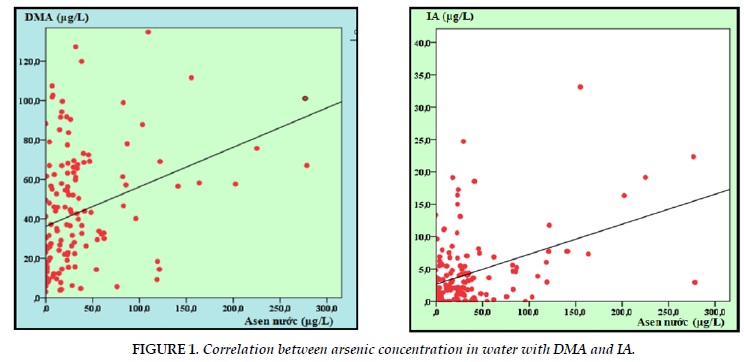
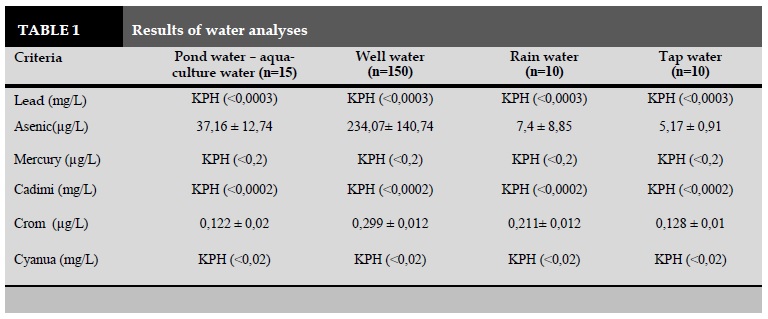

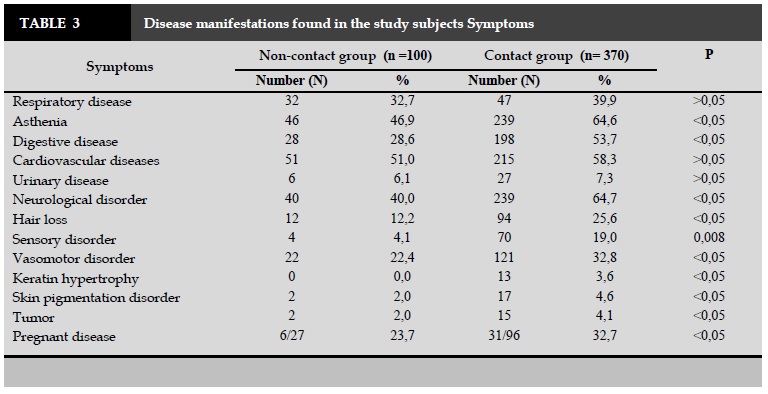
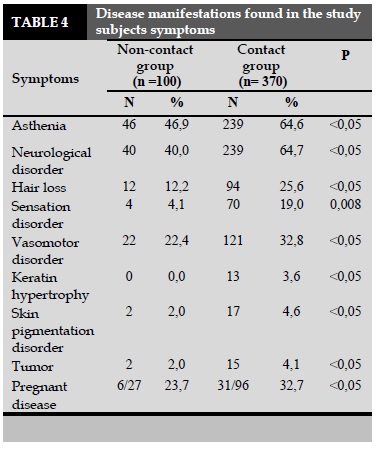
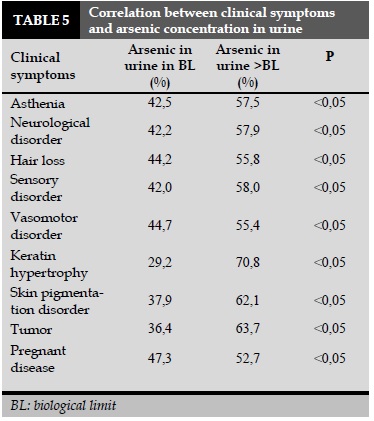

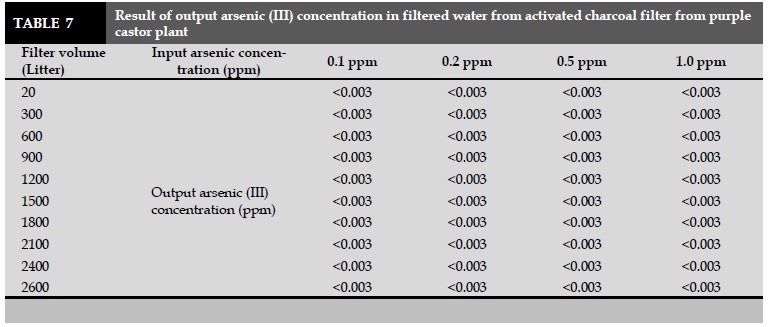
REFERENCES
1. Council, N. R., Lead in the human environment. In National Academy of Sciences: Washington, DC, 1980; Vol. Report Number PB-82-117136.
2. EPA, U. S. Human health and lead. http://www.epa.gov/superfund/lead/health.htm#NRC.
3. Nriagu, J., History of global metal pollution. Science 1996, 272, 223-4.
4. Jarup, L.; Berglund, M.; Elinder, C.; Nordberg, G.; Vahter, M., Health effects of cadmium exposure - a review of the literature and a risk estimate. Scand J Work Environ Health 1998, 24, (Suppl 1), 1-51.
5. Hossn E, M. G., El-Awady M, Ali I, Morsy M, Dawood A. , Environmental exposure of the pediatric age groups in Cairo City and its suburbs to cadmium pollution. Sci Total Environ 2001, 273, 135-46.
6. Seidal K, J. N., Elinder CG, Sjogren B, Vahter M, Fatal cadmium-induced pneumonitis. Scand J Work Environ Health 1993, 19, 429-31.
7. Barbee Jr JY, P. T., Acute respiratory distress syndrome in a welder exposed to metal fumes. South Med J 1999, 92, 510-2.
8. WHO, Lead. Environmental Health Criteria 1995, 165.
9. Steenland K, B. P., Lead and cancer in humans: where are we now? .Am J Ind Med 2000, 38, 295-9.
10. Chilvers DC, P. P., Global cycling of arsenic. In Lead, Mercury, Cadmium and Arsenic in the Environment, Hutchinson TC, M. K., Ed. John Wiley & Sons: Chichester, 1987; pp 279-303.
11. DGEnvironment Ambient air pollution by As, Cd and Ni compounds; Brussels: European Commission DG Environment, 2000.
12. WHO, Arsenic and Arsenic Compounds. Environmental Health Criteria 2001, 224.
ARTICLE INFO
DOI: 10.12699/jfvpulm.9.26.2018.24
Conflict of Interest
Non
Date of manuscript receiving
12/2/2018
Date of publication after correction
15/4/2018
Article citation
Hoang Quoc C, Hoang Xuan B, Dang Xuan S, Nguyen Thi Minh N, Pham Van T. The survey of chemical agents with related health indicators and respiratory disorder in Do Son Industrial Zone of Hai Phong city. J Func Vent Pulm 2018;26(9):24-31.